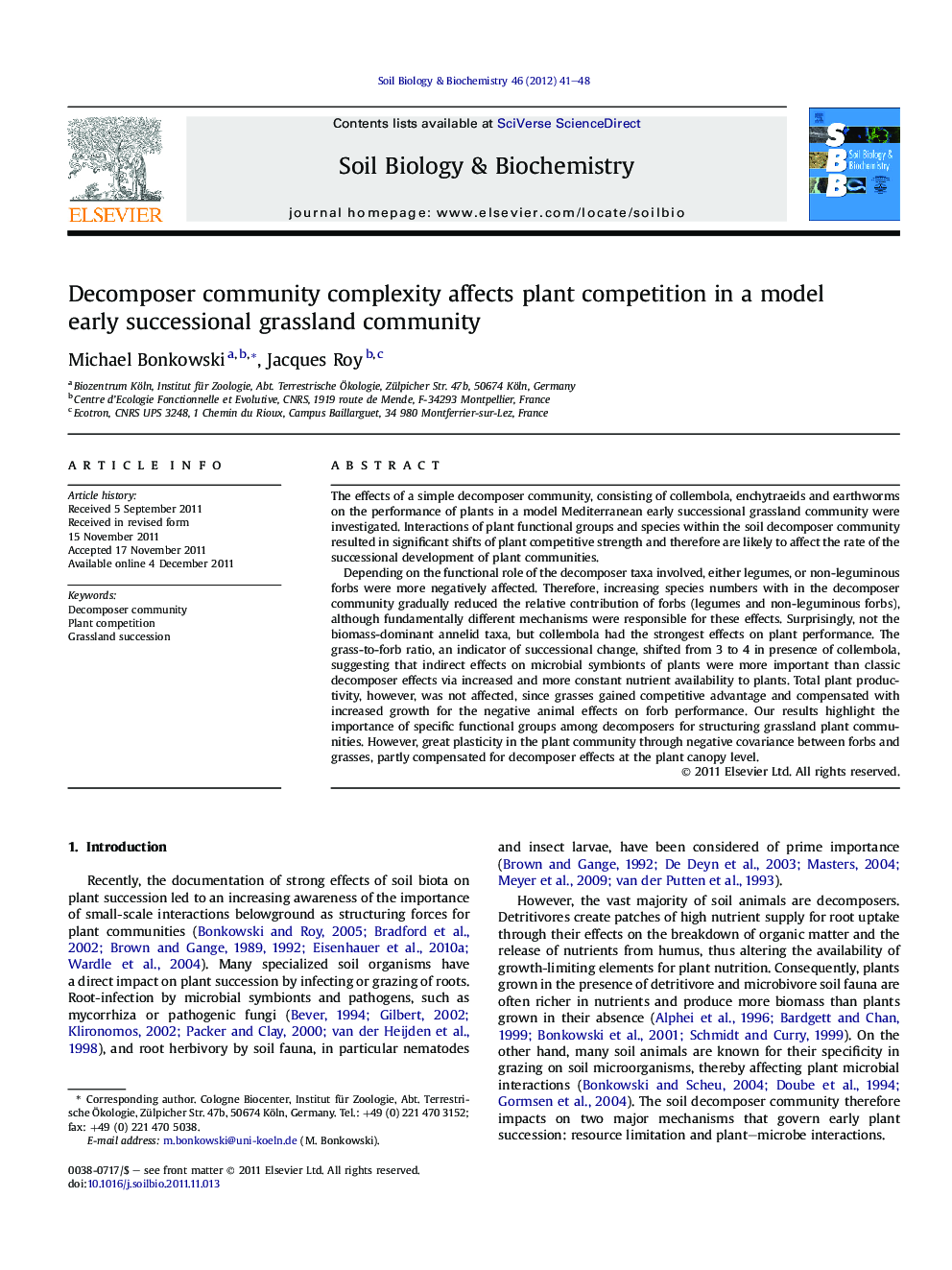| Article ID | Journal | Published Year | Pages | File Type |
|---|---|---|---|---|
| 2025003 | Soil Biology and Biochemistry | 2012 | 8 Pages |
The effects of a simple decomposer community, consisting of collembola, enchytraeids and earthworms on the performance of plants in a model Mediterranean early successional grassland community were investigated. Interactions of plant functional groups and species within the soil decomposer community resulted in significant shifts of plant competitive strength and therefore are likely to affect the rate of the successional development of plant communities.Depending on the functional role of the decomposer taxa involved, either legumes, or non-leguminous forbs were more negatively affected. Therefore, increasing species numbers with in the decomposer community gradually reduced the relative contribution of forbs (legumes and non-leguminous forbs), although fundamentally different mechanisms were responsible for these effects. Surprisingly, not the biomass-dominant annelid taxa, but collembola had the strongest effects on plant performance. The grass-to-forb ratio, an indicator of successional change, shifted from 3 to 4 in presence of collembola, suggesting that indirect effects on microbial symbionts of plants were more important than classic decomposer effects via increased and more constant nutrient availability to plants. Total plant productivity, however, was not affected, since grasses gained competitive advantage and compensated with increased growth for the negative animal effects on forb performance. Our results highlight the importance of specific functional groups among decomposers for structuring grassland plant communities. However, great plasticity in the plant community through negative covariance between forbs and grasses, partly compensated for decomposer effects at the plant canopy level.
► Decomposers have different means to affect plant succession in grasslands. ► Some affect plant-microbe interactions, others resource limitation of plants. ► This had negative consequences for either herbs or legumes. ► Grasses compensated for negative decomposer effects at the plant canopy level.
